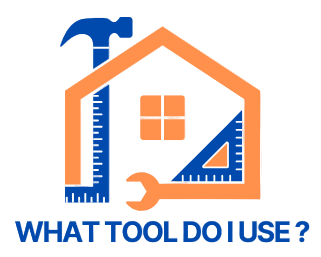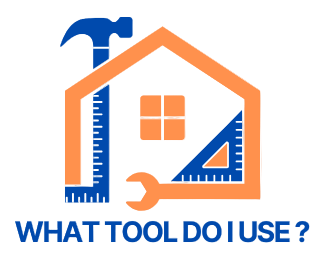Whether you are hanging a picture frame or building your first piece of furniture, DIY projects can be hugely rewarding. But before you pick up that drill or hammer, there’s one essential area every new DIY enthusiast must master: Safety. 🦺
Using tools without understanding proper precautions, can lead to preventable injuries. This beginner’s guide to DIY tool safety walks you through the foundational principles so you can work confidently and responsibly. ✅
📖 View Table of Contents
- Why Tool Safety Matters for Beginners
- Understanding Your Tools: Knowledge is Power
- Personal Protective Equipment (PPE): Your First Line of Defence
- Setting Up a Safe Workspace
- Handling Tools Correctly: DIY Tool Safety Tips for Beginners
- Electrical Safety Essentials
- Safe Lifting and Material Handling
- Fire Prevention and Chemical Safety
- Staying Focused: The Mental Side of Safety
- Teaching Others: Share the Knowledge
- Building a Habit of Safety
- What to Do If an Accident Happens
- Continuing Your Education
- Final Thoughts
- Recommended Tools & Kits
Why Tool Safety Matters for Beginners ⚠️
The Reality of DIY Injuries:
Each year, thousands of people end up in A&E due to DIY related injuries. Common causes include:
- Improper use of tools.
- Not following safety instructions.
- Using damaged or faulty tools. ⚡
- Poor lighting and ventilation.
- Inadequate personal protective equipment (PPE). 🥽
- Lack of basic safety technique.
- Rushing or working while fatigued.
The Benefits of Learning Early
By learning DIY tool safety from the start, you:
- Prevent accidents and injuries.
- Protect your home and workspace.
- Build skills and confidence faster.
- Set a good example for others. 👍
Safety isn’t something to “figure out later”, it’s as critical as knowing which tool does what.
Understanding Your Tools: Knowledge is Power 🎓
Before you touch any tool, take time to get familiar with it.
Hand Tools vs Power Tools
- Hand tools (e.g. Hammers, screwdrivers, pliers) rely on your own force.
- Power tools (e.g. Drills, circular saws, sanders) use electricity or batteries.
Power tools do the heavy lifting, but introduce additional hazards such as spinning blades and electrical risks.
✅ For more on this topic: How Do I Stay Safe When Using Power Tools for the First Time?
Read the Manual
Every tool comes with a manual containing critical information including:
- How to assemble and set up the tool.
- What the tool can do and its limitations.
- Safety features and warnings. ⚠️
- Safe operating procedures, and PPE guidance.
- Maintenance and storage tips.
- How to troubleshoot problems safely.
Reading the manual isn’t about being over cautious, it’s about working smarter and in the long run it saves time, protects you and your tools, and helps you avoid common mistakes.
Inspect Tools Before Use
- Check for cracks, frayed cords, and loose parts.
- Ensure blades and bits are sharp and secure.
- Replace or repair anything damaged.
⚠️ A faulty tool is an accident waiting to happen.

Personal Protective Equipment (PPE): Your First Line of Defence 🦺
PPE is not optional, it’s the simplest and most effective way to protect yourself.
Essential PPE for Beginners
- Safety glasses or goggles: To shield your eyes from flying debris. 🥽
- Hearing protection: Power tools often exceed safe decibel levels. 🎧
- Dust mask or respirator: Protect your lungs when sanding, sawing, or painting. 😷
- Gloves: Use cut resistant gloves when appropriate🧤
- Work boots: Closed toe, slip resistant footwear protects against dropped tools.🥾
Clothing Considerations
- Wear snug fitting clothing (no dangling sleeves or jewellery).
- Tie back any long hair.
- Avoid synthetic fabrics that can melt.
Setting Up a Safe Workspace.
Even with perfect PPE and well maintained tools, an unsafe environment can cause injuries.
Keep Your Area Clean and Organised
- Clear away clutter.
- Sweep up dust and debris regularly.
- Store tools properly when not in use.
A tidy workspace reduces trips and falls.
Ensure You Have Adequate Lighting. 💡
- Good lighting helps you see clearly, prevents mistakes, and reduces eye strain.
* If overhead lighting is insufficient, use portable work lights.
Ventilation
- Open windows and doors.
- Use fans to circulate fresh air.
- Wear a respirator if fumes are strong.
✅ Learn more: How Do I Maintain and Store My DIY Tools Properly?
Handling Tools Correctly: DIY Tool Safety Tips for Beginners 🛠️
Hand Tool Best Practices
- Hammering: Grip the handle near the end for control.
- Screwdrivers: Match the tip size to the screw head to prevent slipping.
- Utility knives: Cut away from your body and retract the blade after each use.
Power Tool Best Practices
- Drills: Secure the material with clamps before drilling.
- Saws: Let the blade reach full speed before making contact.
- Sanders: Keep both hands on the tool and let the machine do the work.
✅ Also helpful: How to Use a Power Drill Safely (Beginner Guide)
⚠️ Never rush or force a tool, this is the quickest path to injury.
Electrical Safety Essentials 🔌
Power tools require special precautions.
Check Cords and Outlets
- Inspect cords for fraying or exposed wires.
- Avoid using extension leads as a permanent solution.
- Keep cords clear of cutting areas.
Use RCD Protection
Residual Current Devices (RCDs) shut off power in dangerous conditions: use them outdoors and near moisture.
Disconnect Before Maintenance
Always unplug or remove the battery before changing blades or bits. This prevents you from accidentally starting up your equipment.
Safe Lifting and Material Handling 📦
Many DIY injuries come not from tools, but from lifting and moving materials.
Lift Safely
- Bend your knees, not your back.
- Keep loads close to your body.
- Ask for help with heavy or awkward materials.
Store Materials Smartly
- Stack wood flat to avoid tipping.
- Keep pathways clear.
- don't store heavy items high up.
Fire Prevention and Chemical Safety 🔥
Handling Flammable Liquids
- Store in clearly labelled, sealed containers.
- Keep away from open flames and heat sources.
Using Rags and Cloths
Oily rags can spontaneously combust. After use:
- Lay them flat to dry outdoors.
- Store in metal containers with tight fitting lids.
Staying Focused: The Mental Side of Safety 🧠
- Avoid working when tired: If you’re sleepy or exhausted, wait.
- No alcohol or drugs: Even small amounts impair judgement.
- One task at a time: Avoid multitasking with tools: Focus fully.
Teaching Others: Share the Knowledge 👥
- Model safe habits.
- Supervise beginners closely.
- Share these DIY tool safety tips to help others learn.
Building a Habit of Safety 📋
Safety isn’t a one-off checklist; it’s a habit you build with every project.
Make a Pre Project Routine
- Inspect tools and workspace.
- Gather PPE.
- Review the tool’s manual.
- Plan each step.
What to Do If an Accident Happens 🆘
Basic First Aid
- For minor cuts: clean and bandage.
- For larger wounds or eye injuries seek medical help immediately.
- For electrical shock: Turn off the power source and call emergency services.
⚠️Keep a well-stocked first aid kit accessible.
Continuing Your Education 🎓
This guide provides a solid foundation, but learning is ongoing.
- Local hardware stores often host safety workshops.
- Manufacturer websites offer video tutorials.
- Community classes can build your skills.
Final Thoughts 💭
DIY projects can transform your home and build confidence, but only if you prioritise safety every step of the way. By mastering these DIY tool safety tips, you lay the groundwork for a lifetime of enjoyable, injury-free DIY.
Stay mindful, stay prepared, and never stop learning. Your health and safety are worth the extra time and effort. 🙌
Whether you’re hanging a picture frame or building your first piece of furniture, DIY projects can be both rewarding and empowering. But before you pick up that drill or hammer, there’s one essential area every new DIY enthusiast must master safety. Using tools without understanding proper precautions can result in preventable injuries. This beginner’s guide to DIY tool safety tips for beginners will walk you through foundational principles to help you work confidently and responsibly.

✅ 🛠 Useful Tools & Accessories
🔒 Affiliate Disclosure: This section contains affiliate links. If you purchase through them, we may earn a small commission at no extra cost to you. 🧰
🔗 3M Worktunes Connect Bluetooth Ear Defenders
Protect your hearing while streaming music or taking calls, this is perfect for noisy DIY environments. 🎧
View Product🔗 DeWalt Goggle Concealer Clear Goggle
Stay safe from flying dust and debris: these tough, anti-fog goggles fit comfortably with ear defenders. 🥽
View Product🔗 Durhand Professional 5-Drawer Roller Tool Cabinet
Keep your tools organised and easy to move: ideal for home workshops or garages. 🧰
View Product🔗 General Medi 210-Piece First Aid Kit
Be prepared for minor cuts and scrapes: a compact, comprehensive kit for every DIYer’s shed or van. 🚑
View Product🔗 Loccef Safety Work Gloves
Durable, flexible gloves offering strong grip and protection for everyday DIY and workshop tasks. 🧤
View Product🔗 Sylstar COB Rechargeable Work Light 100W
Bright, portable LED floodlight: ideal for lighting up dark workspaces or outdoor jobs. 💡
View Product





